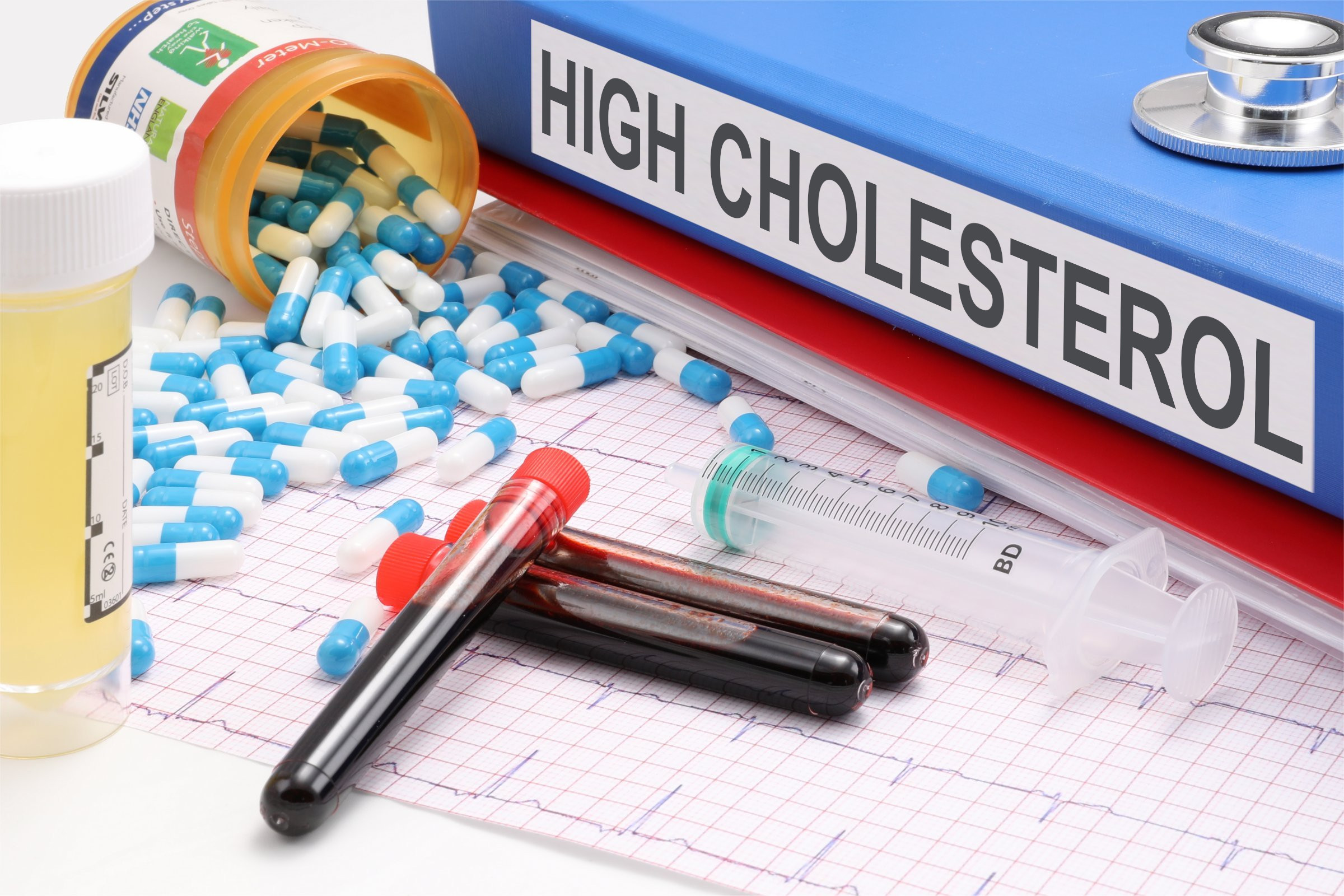Cholesterol is an organic substance, a natural fat-soluble alcohol. In the body of all living things, it is part of the cell wall, forming its structure and participating in the transport of substances into the cell and back.
Cholesterol exists in two forms :
👉 LDL or low-density lipoprotein (LDL) is called “bad” cholesterol.
👉 High-Density Lipoprotein (HDL) or HDL is said to be "good".
Hypercholesterolemia, which was not considered a problem a few decades ago, now excites many. Heart attacks and strokes kill many people, and the cause of half of them is vascular atherosclerosis, which, in turn, is a consequence of high cholesterol in both men and women.
What does this mean and what to do in this case, we will consider today?
When is the test ordered?
Cholesterol testing is indicated in the following patients:
* Women who take hormonal contraceptives for a long time.
* Women in menopause.
* Men after 35 years.
* Persons at risk by heredity from a certain age.
* Suffering from diabetes and hypothyroidism.
* obese.
* Have bad habits.
Most experts believe that sedentary work, a sedentary lifestyle, lack of regular physical activity in the fresh air, overeating, and an abundance of junk food in the diet are the determining factors in the early development of atherosclerosis and the causes of hypercholesterolemia in the population.
Blood cholesterol norm
The cholesterol norm can fluctuate between 3.6 and 7.8 mmol / l. However, doctors say that any cholesterol level above 6 mmol / l is considered high and poses a health risk, as it can cause atherosclerosis, i.e. clogging of blood vessels, creating obstacles to blood flow in the veins and arteries.
Classification of blood cholesterol levels:
* Optimal - 5 mmol/l or less.
* Moderately high - 5-6 mmol / l.
* Dangerously high cholesterol - 7.8 mmol / l.
There are several types of these connections:
HDL - high-density lipoproteins transport excess free cholesterol from the tissues to the liver for processing and excretion.
LDL - low-density lipoproteins, designed to transport cholesterol from the liver to the tissues.
VLDL - very low-density lipoproteins transport endogenous cholesterol, and triglycerides in the body.
High blood cholesterol contributes to the development of atherosclerotic lesions of the walls of blood vessels and is one of the risk factors for the development of serious cardiovascular diseases, such as angina pectorals (coronary heart disease) and myocardial infarction, l stroke, and intermittent claudication.
The causes of hypercholesterolemia
Why do women have high blood cholesterol, what does it mean and what should be done? The risk of hypercholesterolemia increases in case of hereditary predisposition, if close relatives have atherosclerosis, coronary heart disease,poor-quality or, arterial hypertension.
With age, the risk of developing hypercholesterolemia also increases. In middle age, an increase in cholesterol is more often detected in men, but with the onset of menopause, women become susceptible to this pathology as often as men.
However, the main causes of hypercholesterolemia in women or men are acquired:
* Patient's inappropriate lifestyle: hyperdynamic, smoking, alcohol abuse, frequent stressful situations.
* Concomitant diseases: obesity, diabetes mellitus, systemic connective tissue diseases.
* Culinary preferences: regular consumption of fatty foods, of animal origin, insufficient quantity of vegetables and fresh fruits in the diet.
All of the above factors are direct answers to why cholesterol may be high, or rather, they are direct results of a poor quality attitude towards one's health.
Symptoms
Here are some signs that allow you to identify high cholesterol:
* Angina pectoris due to narrowing of the coronary arteries of the heart.
* Pain in the legs during physical exertion.
* The presence of blood clots and ruptured blood vessels.
* Rupture of plaque and, consequently, heart failure.
* The presence of xanthoma results in yellow spots on the skin, most often around the eyes.
By itself, high cholesterol has no symptoms. Symptoms are atherosclerosis: a common consequence of excess cholesterol.
While you can recognize a cold by a slight runny nose, high blood cholesterol is sometimes not detected until after a heart attack.
In other words, don't wait for the signs of high cholesterol to appear. It is best to do prevention tests every 1 to 5 years (depending on the risk).
How to treat hypercholesterolemia?
To reduce high blood cholesterol levels, an integrated approach is needed. Please consult your healthcare professional to determine the best cholesterol management program for you.
Depending on the degree of risk, different treatment methods are used:
* Rejection of bad habits.
* Physiotherapy.
* Weight loss.
* Special diets.
* Medical treatment.
Helps lower blood cholesterol in women and men:
* Physical activity 5 to 6 times a week for 30 to 60 minutes.
* Do not eat foods containing trans fats.
* Eat more fiber, in foods allowed for a low carbohydrate diet.
* Eat sea fish at least twice a week or take omega-3 fatty acids.
* Stop smoking.
* Stop drinking alcohol.
It is worth noting the importance of regular medical examinations since most diseases are much easier to cure at the initial stage,when a person still has practically nothing to fear.
Remember: Complications caused by high cholesterol are irreversible and treatment does not eliminate existing problems, only prevents new ones from developing.
Foods that raise cholesterol
To reduce high cholesterol, you should limit cholesterol-raising foods in your diet:
* Red meat: beef, veal.
* Egg yolk.
* Fatty pork, lamb, lard.
* Sausages.
* Duck meat.
* Mayonnaise.
* Canned food.
* Easily digestible carbohydrates.
* Fried food.
* Margarine.
* Coffee.
* Products containing trans fats, known as fast food products: potato chips, crackers, etc.
* High fat milk: cheese, cream, sour cream, milk, ice cream, butter, ghee.
* Oysters, crabs, shrimps, caviar. For example, a lobster weighing 100 gr. contains 70 mg. Cholesterol shrimp.
Do not forget that on average, only 30% of cholesterol enters the blood from the outside. The rest is produced by the body itself. Therefore, even if you try to reduce the level of these fats with the help of various diets, you still will not be able to "remove" its significant part.
Experts recommend sticking to a cholesterol-free diet not for prevention, but only for medicinal purposes when the level of these fats is really high.
Cholesterolemic products
In addition to limiting cholesterol-raising foods, you can add cholesterol-lowering foods to your diet.
Lawyer.
Wheat germ.
Brown rice with bran.
Sesame seeds.
Sunflower seeds.
Pistachios.
Pumpkin seeds.
Pine nuts.
Linseed.
Almond.
Green olive oil in any form.
Wild salmon and sardines - fish oil.
Blueberries, raspberries, strawberries, cranberries, cranberries, Aronia, pomegranate, and red grapes.
Additionally, eliminating coffee and replacing it with high-quality weak green tea can reduce cholesterol levels by 15%.
Sports
The easiest and most natural way to keep the vessels in good condition is movement: physical work, gymnastics, dancing, walking, in a word, everything that gives a feeling of muscular joy. Physically active people tend to have lower total cholesterol levels and higher “good” cholesterol levels.
Half an hour of walking at a moderate pace 3–5 times a week, so that the pulse does not quicken more than 10–15 beats per minute, is an excellent cycle of therapy.
Medicines and Supplements
In addition to such means as increasing physical activity, maintaining a healthy lifestyle, and eating a healthy diet, a person with high cholesterol may be offered medication.
Also, after consulting a doctor, you can try taking dietary supplements. They are not drugs, but they can help lower cholesterol levels.
To reduce cholesterol, we choose the inexpensive and most effective.
<<<< to know more about this subject, you can consult my article HERE.
















0 Comments